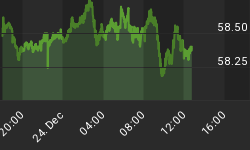Month in and month out I see unwarranted optimism in Europe and in the US.
For example, on Thursday I stated "Philly Fed Slips Into Contraction (Again); Current Conditions Recessionary, Future Expectations Far Too Optimistic".
Here is the chart I posted:

That chart got me to wondering "just how wrong are future expectations historically?" The data is available, all one has to do is chart it.
I asked Doug Short at Advisor Perspectives if he could produce a chart of future expectations offset by six months to see how expectations actually matched what did happen. Doug graciously produced a pair of charts.
Future Expectations Shifted 6 Months Forward vs. Actual Results
Note that manufacturers in the Philly region are especially clueless during recessions as to how fast things will improve. They can be wildly off at other times too, as shown by the black ovals.
Since the Philly Fed index is generally noisy (huge month-to-month random fluctuations), we decided to smooth out the lines by showing a 3-month rolling average of current conditions vs. a 3-month rolling average of future expectations.
Future Expectations Shifted 6 Months Forward vs. Actual Results (3-Month Rolling Averages)

![]() Larger Image - Charts by Doug Short, annotations in purple and black by Mish.
Larger Image - Charts by Doug Short, annotations in purple and black by Mish.
Optimistic Expectations
Generally speaking, manufacturers' expectations about future conditions are wildly off for many months before during and after recessions.
In the double-dip recession of 80-82, it took 43 months from the end of the first recession for expectations to match reality, then the lines immediately diverged again.
Mid-cycle there were a couple of periods where expectations generally matched reality (as noted by close lines with repeat crossovers). The first was 1985 to 1987, and the second was 1996 to 1999.
In the 1974 and 1980 recessions expectations plunged ahead of the recession. Both appear to be oil related because it has not happened since.
Key Points
- Wide variances in expectations vs. current conditions tend to be way over-optimistic.
- Current spread of expectations vs. reality is in recession territory, albeit not quite as pronounced (yet) vs. earlier recessions.

















